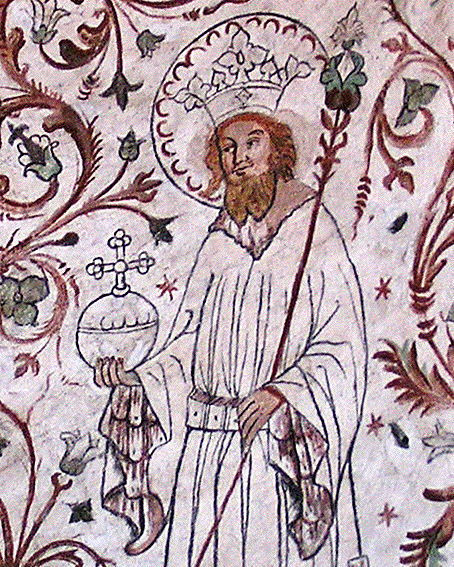New archeological evidence seems to confirm the bones found in a medieval reliquiary at Uppsala Cathedral in Sweden, belong to Saint King Erik.
Erik IX was a Swedish king, who reigned c. 1155-1160. No contemporary historical records of Erik survive, what little is known about him nowadays is based on later tales and legends, aimed at having him established as a Roman Catholic saint. His feast day is memorialized on 18 May. According to such legends, King Erik was instrumental in the consolidation of Christianity in his realm. He allegedly led the First Swedish Crusade, with the aim of evangelizing the neighbouring Finns. In addition, he was responsible for codifying the laws of the Kingdom, thus acquring the nickname of Erik the Lawgiver. He was eventually beheaded by a group of rebels supporting a Danish claimant to the throne, as he was leaving church after hearing Mass on Ascension Day in 1160.
He was buried in the church of Old Uppsala. Subsequently, his body was enshrined and his relics and regalia transferred to the present-day Cathedral of Uppsala, built in the mid-13th century on the site of Erik’s martyrdom.

Archeologists from Uppsala University were granted permission in April 2014 to open the reliquary to carry out research on the King’s bones, which hadn’t been examined since 1946. With modern technology such as radiocarbon dating and DNA tests now available, the research team, led by Sabine Sten, was able to announce that Erik’s remains may be authentic.
The team examined 23 bones, seemingly from the same person, although DNA tests, which would definitively confirm whether all of these bones belonged to one individual, are still pending. The radiocarbon tests, which measure the age of organic materials, were consistent with a death in 1160, the researchers said.
The analysis showed that “the bones belonged to a man who died at age 35 to 40. Standing at about 5 ft 6 in (1.7 m) tall, he was well fed and well built, with no discernible diseases”, the study found.
“His body was very healthy”, said Sten, adding that “We can also see that he was consuming freshwater fish,” which makes sense from a historian’s point of view, considering that, in the 12th century, strict Christian observance prescribed numerous fasting days, during which it was not allowed to eat meat from sheep, cattle or pigs.
The bone analysis further showed that the King suffered seven severe cuts on his legs, and one of his neck vertebrae was cut through.
For now, Sten said the team is still waiting on the DNA test results in order to learn more about Erik’s genealogy and whether he was harboring diseases not discernible to the naked eye.
King Erik remains to this day the patron saint of the city of Stockholm, and his crowned head is depicted in gold on the city’s coat of arms.
Photo credit: Reliquary of King Erik at Uppsala Cathedral and fresco depicting King Erik IX of Sweden at Överselö kyrka, both via Wikimedia Commons.

